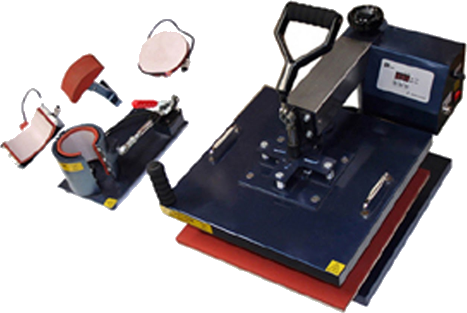Sublimation printing

The sublimation process can offer highly graphics and high-quality products in a diverse range of materials. This vivid technique, with a photographic high quality definition that result in a highly impressive and highly visual equipment that are a true reflection of the early presented designs.
Our equipment allows us to guarantee deliveries of all kinds of quantities and maintain designs so long as our clients require. The value for money of this system allows the wide distribution of different seasonal designs with attractive high for fans and followers of the club.
This technique not only allows making equipments for the competition, also on any model of sports clothing with a high degree of polyester in its composition as well as the manufacture of various objects for fully customized commercial promotion.
Right now we will define basically and quickly what is the sublimation process we use in our clothing.
What is sublimation?
Sublimation is the technique for marking an object by transfer ink to the object with the application of heat. Sublimation allow transfer pictures and designs to a variety of objects such as jugs, plates, boxes, plates, mats, textiles, bags, puzzles, etc. These objects should be coated with a polyester varnish and textiles woven must contain a minimum of 75% polyester (can not sublimate on cotton).
What is needed for sublimation?
Printing system
Connected and managed from a computer, with piezo head as the print head prints in cold temperature. The printer must have a special ink charging system or use special ink cartridges loaded with sublimation ink.
Sublimation ink
It is a special ink that allows dye transfer with temperature. There are specific inks for small format printers and large format.
The transfer paper
Is the support on which the design or image is transferred to the object. This paper does not absorb ink, it is only used to transport it. There are roles in small format sheets and paper rolls for large formats.
The iron
Although the first tests can be performed with domestic plates, must be provided with specific plates for transfer. Depends on the objects to be marked, there will be a flat or plate with the form of the object (such as a cup or a cap). There are irons of all measures and even plates in continuous hot roll calenders for large textile productions.
¿Cómo se realiza?
El proceso básicamente es sencillo, con la impresora cargada con las tintas de sublimación hay que imprimir el diseño en el papel de transferencia. La impresión se deberá hacer al revés (en espejo) ya que para la transferencia se gira el papel. Una vez impreso el papel de transferencia, tarda muy poco en secar.
Hay que colocar el objeto a marcar en la base de la plancha y el papel impreso tocando la zona a marcar con la imagen en contacto con el objeto. Hay que cerrar la plancha para aplicar presión y temperatura en el papel y el objeto. Dependiendo del tipo de objeto el tiempo y de planchado será diferente, así como la temperatura de planchado (normalmente ronda los 200º C).
Una vez planchado, se retira el papel y el objeto de la plancha con mucho cuidado ya que puede estar muy caliente. Quedará una imagen con colores vivos y de alta definición.
How is it performed?
The process is basically simple, loaded with dye sublimation printer must print the design on the transfer paper. Printing should be done in reverse (mirror) as the transfer paper is turned. After the transfer paper is printed, it takes a short time to dry.
The object should be placed to mark on the base plate and the printed paper playing area marked with the image in contact with the object. You have to close the plate to apply pressure and temperature in the role and purpose. Depending on the type of object and ironing time will be different as well as the ironing temperature (usually is around 200° C).
Once ironing, remove the role and purpose of the plate very carefully because it can be very hot. There will be a picture with vivid colors and high definition.
What is this applied for?
You can mark textile products like T-shirts, sports wear, fashion garments, caps, etc., provided that they contain at least 75% polyester. There are available a wide variety of products made for sublimation, such as mugs, puzzles, tablets, pendants, tiles, plates, etc. All these products have a coating of varnish and should be transparent polyester with white background.
Always verify that the part can withstand up to 200 degrees without deformation.
Need more information?
If you want to know more about how we make our processes of sublimation and the spectacular results we offer, please contact us.
